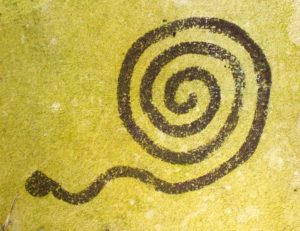(This is the third in a series of blogs around the same theme. Beginning with Narcissism on the Way to Love and followed by Hillary as Hermaphrodite, this blog takes a closer and deeper look at the psychology of narcissism. All three blogs are commentaries on the rebalancing of the masculine and feminine partnership, so necessary for the survival of the world and currently being played out in the political arena.)
Recent political events have given rise to the term “locker room talk” as a recognizable and understandable categorization of male sexual fantasy or actual sexual behavior, at least one common expression of it. So recognizable is its occurrence that many intelligent women in a recent New York Times article actually dismissed locker room talk as a legitimate reason to disqualify a potential presidential candidate exposed as engaging in it, in locker room talk.
On some level these women seem to be expressing the truth and acceptance that all men have that side of themselves; however annoying or immature it might be—it simply is. So, what is “it”?
In my recent blog, Narcissism on the Way to Love, I gave a nod to Freud’s stages of libidinal (sexual) development, beginning in primary narcissism. Narcissism is a psychological mindset that literally can’t get its face beyond looking in the mirror. The eyes simply cannot take in a picture of the world separate from the self.

– Photo by Jan Ketchel
Relationship is not possible at the narcissistic stage because relationship requires two separate people in order to exist. For the narcissist there is only one being, the self. Of course, at the adult stage, a narcissist must function in a world of separate objects, and they do. However, those objects are just that, toys in a toy chest for one’s pleasure and amusement.
Locker room talk depicts a woman, not as a separate being, but rather as an object with body parts available for one’s play and for one’s taking: legs, tits, asses, and pussies. The narcissist cannot solve the puzzle of a world beyond the self, much less the mystery of woman, a being distinctly other than themself. In fact, the terror of confronting the mystery of otherness gives rise to the sanctuary of locker room talk. Here men can brag of tales of conquest as they graphically describe the booty of body parts, the treasures they have stolen or intend to steal. Here men collude in an attempt to avoid real terror at the power of nature as embodied in a woman. The fixation here does indeed go back to mother. For what more powerful being on earth could there be than woman, whose body gives life to all human beings?
Freud localized this problem to an incestuous desire to unite with this powerful woman and therefore remain under her protectorate in an eternal Eden of bliss. Jung expanded this perspective beyond this regressive wish to include the challenge to individuate, to truly become a separate self capable of standing on one’s own two feet and thereby actually able to take on the mystery of relating to a feminine being that exists outside the narcissistic orbit of the first three chakras. For Jung, true relationship could only begin at the level of the heart chakra, where another individual can be seen and experienced objectively as existing outside of the self.
At the heart center, another person is a whole person, both body and psyche. Connection requires meeting the whole person. Body parts may indeed activate instinctual desires, but at the heart center the true desire is to meet and connect with another being, body and soul. Reaching this stage of development requires a heroic effort to both withstand the regressive protectorate of the mother world, frequently projected onto all women “partners,” and a willingness to truly encounter the mystery, power, and integrity of another as they truly are.
Donald Trump serves as a helpful example of both Freud and Jung’s perspectives. Donald expresses his penchant for married woman. Freud, of course, would see the oedipal victory in this: steal another man’s wife, obtain mother! This includes the power dynamic of defeating father because, as Donald states, in his world mother (married woman) willingly chooses/loves his lecherous approaches!
Jung would acknowledge this pyrrhic regressive victory but would insist as well that the hero in this case has really not slain the primordial dragon of dependency on mommy and her power to sustain life. To slay the dragon is to move beyond the family nursery, to stand on one’s own and enter the mystery of life. And, in entering that mystery of life, we must grant others their own autonomous existence.
Beyond the narcissistic orbit others are not simply need-fulfilling objects to play with or break. Others are powerful beings who likely terrify us because of their godly ability to give life, as well as take it if they see fit. Can woman be granted the fullness of who she truly is? This is a Relationship 101 prerequisite.
Like the toys of childhood, locker room talk must be put away if we are to take on the challenge of true adulthood and real relationship. It’s time to stop settling for less, men and women alike.
Outside the locker room,
Chuck






